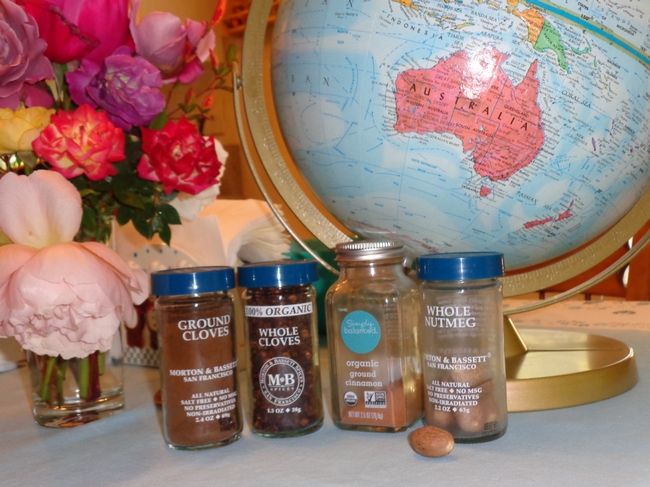Where Did Those Spices Come From?
Baking persimmon cookies with chocolate chips for our annual Master Gardener Wreath Clinic, I began to wonder where the ingredients, especially the spices, I was using had come from. Yes, I know the grocery store, but really, which far-away country, what exotic plant? The cookies had cinnamon, cloves, and nutmeg. I needed to do a little research.
Cinnamon comes from two sources. The first is the inner bark of a tree native to Sri Lanka: Cinnamomum verum., also known as Ceylon cinnamon. The harvesters score the tree bark and peel the bark from the tree to get to the reddish-brown inner bark. The bigger pieces of the inner bark are ground into what I may have had in my spice bottle. The smaller pieces curl when dried that can yield the cinnamon sticks used in cider and hot chocolate. These sticks have many thin layers and are easily crushed. My cinnamon could also have come from Cinnamomum cassia. This evergreen is found in China, Vietnam and Southeast Asia. The bark is thicker, and more often, cinnamon sticks are from this source. They will be just one layer that has curled.
Cloves are actually the dried flower buds of an evergreen tree native to the Spice Islands (Malaku Islands) in Indonesia – Syzyium aromaticum. The buds are picked while they are still pink, on their way to turning red, are dried and then used as a spice. Interestingly, both cinnamon and cloves have the same essential oil, eugenol.
Mystica fragrans is a “two-fer” source for mace and nutmeg. Nutmeg is the inner kernel of the outer layer or aril, mace, from the fruit tree Myristica fragrans. Nutmeg was originally found in the Bandu Islands, also part of Malaku, Indonesia. It is now grown not only in Indonesia, but in Guatemala, India and Grenada, where it is the country's most famous export and is even found on the country's flag. For some, the scent of nutmeg is like that of pines. The oil in the kernel is myristicin and can also be found in much smaller quantities in celery and carrots, dill and parsley.
My cookies, while baked locally, are actually from around the world. And when I consider the lengths made to grow, harvest, prepare, and bottle the spices and then get them to my local store, the price I pay doesn't seem high. Bon Appetit!

photo by Michelle Davis




Posted by Kathy Klobas on January 3, 2019 at 10:27 AM